The premature contact of a phlebologist with varicose veins developed is the main reason why it is too late to influence the disorder with ointment or gel.The doctor must prescribe a more effective treatment, including the operation on varicose veins on the legs is more effective.We should not forget that even the operational removal of a ship affected by the disease does not guarantee complete cure: the disease can spread in healthy tissues.
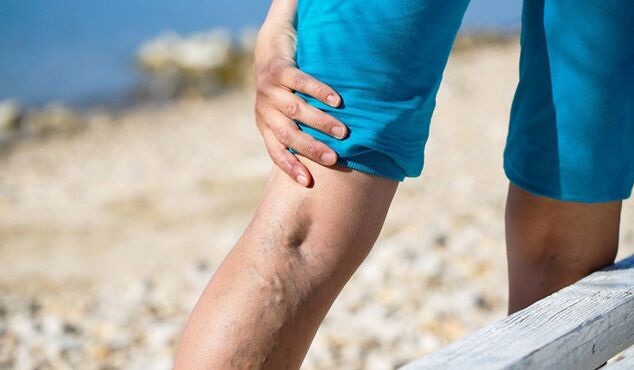
Varicosa expansion or varicose veins are a disease that is characterized by the weakness of the valves in the veins and the dysfunction of the vascular wall, as well as by stagnation of the blood in the veins of the lower limbs.This pathology is full not only with a violation of the trophism or the nutrition of the tissue, the result of which can be difficult and long -term healing trophic ulcers, but also dangerous as they are stagnant blood and blood forms that can be transported by blood flow throughout the body.Furthermore, in the case of the formation of thrombotic impositions within the vascular wall (phlebotrombosis), its infection is possible with the development of formidable diseases - thrombophlebitis.
Varicosa disease surgery
The operation for the varicose veins of the lower ends is radical and consists in the removal of the subcutaneous veins of the lower ends (phlebectomy) or in the sclerosis of the deep veins of the lower part of the leg and hip.
Traditionally, phlebectomy (Crocectomy) is performed according to the Bebcock method and consists in the introduction of the probe in the lumen of the vein with the subsequent stretch of the vein completely for its length by cutting the external skin.The incision is sutured at the end of the operation with a cosmetic seam.
The mini-reflebectomy is used to remove very short sections of the vein, during the operation the veins are not used.The cuts on the skin are not performed and a piece of vein is removed through a thin drilling on the skin that does not require imposing seams.
With a small area of damage to varicose veins, it is possible to perform a more delicate technique: stripping.This is extending with a thin hook only of a varicose node.The experience is carried out by means of two cuts on the skin with their subsequent suture.A variety of this technique is crystropand: "sinking" the vein to the cryosonda using low temperatures, the destructive node is also elongated.
The Sclerosion of Vienna is the introduction of a sclerosing in its light - a substance that "pastes" the walls of the vein between them, but the vein remains in depth under the skin, without performing its functions.The blood flow through the vein stops and crosses the collateral vessels, without violating the outflow of venous blood from the lower limb.Vienna sclerosis is carried out under the control of ultrasound.
The endovascular coagulation laser of varicose veins is the last method of phlegology and consists in the introduction of a thin probe in the lumen of vein with laser radiation, which exerts a cauterizing effect on the walls of the vein.
The method of radio frequency exposure of the veins also refers to a more modern treatment of varicose veins, but not all medical institutions are equipped with adequate equipment.The technique consists in the "cauterizing" effect on the vascular wall of high frequency radio waves.
Indications for the removal of the veins
Not all patients are shown surgery, but in some cases it is still impossible to do without, since it is better to remove the source of potential inflammation and blood clots rather than expect complications.States that require surgery include the following:
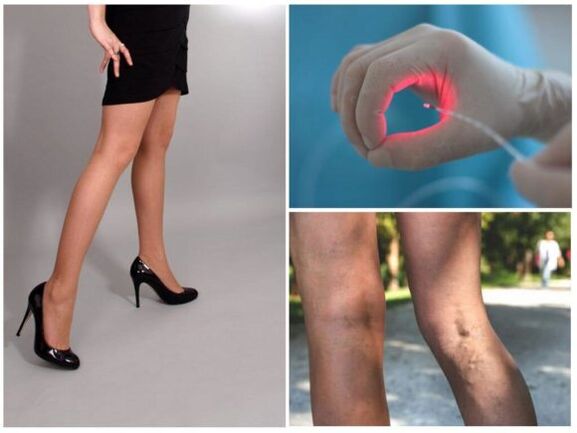
- The risk of occurrence or the already thromboflebitis source,
- Frequent exacerbations of thrombophlebitis,
- Vast damage to subcutaneous veins,
- Serious symptoms of varicose veins - a constant feeling of gravity and pain in the legs,
- Trophic non -healing ulcers,
- Nutrition disorders (trophic) of the tissues of the lower limbs - changes of color and cooling of the skin of the legs and feet.
Contraindications to the operation
Also carry out a minimum vascular intervention is contraindicated in the following cases:
- Pregnancy 11 and 111 quarter,
- Acute infectious diseases,
- Exacerbations of chronic diseases (bronchial asthma, diabetes mellitus, stomach ulcer, etc.),
- Acute imtena,
- Acute myocardial infarction,
- High inflammation of the lower limbs.
In any case, all indications and contraindications are determined by a phlebologist or surgeon in the patient's full examination process.
Which method to choose?
The use of a particular method of treatment is evaluated only by a doctor, based on the degree of propagation of the process.
Of course, with small nodes, less invasive methods are preferable, such as mini-flexctomy, short stripping, laser splashes and sclerosis, due to the fact that they are less traumatic and practically do not require a rehabilitation period.At the same time, with a large length of varicose veins, preference is given to traditional phlebectomy, which not only requires spinal anesthesia, but is also a rather traumatic operation, leaving a aesthetic defect in the form of postoperative scratches on the legs.
In this regard, you should not postpone a visit to the doctor in the existing initial phase of the varicose veins, and even more, it is not necessary to abandon a less traumatic operation if the doctor has seen the need for this at the time of the exam.
When is it better to do the operation?
The decision on the need for surgical treatment is taken only after consulting a phlebologist or vascular surgeon.However, in an initial phase in which the patient is worried only for the aesthetic discomfort in the form of varicose nodes, as well as a slight swelling of the feet at the end of the day, you can try to stop a further progression of the process using the compression knitwear and the Venetonic drugs.
In the event that there is pain in the limbs, as well as the risk of complications, it is not recommended to delay the operation.
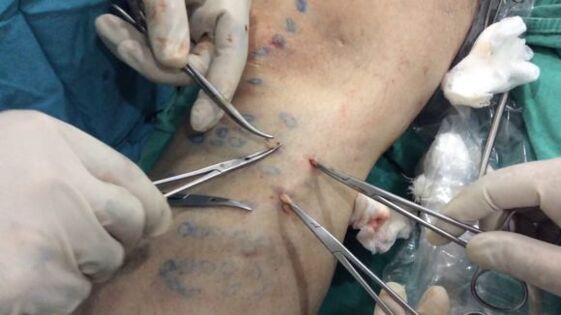
Preparation for the operation
Before planning an operation to remove the veins, the patient must perform a series of necessary exams.These include a consultation of a surgeon or phlebologist, as well as an ultrasound of the veins of the lower limbs.In the event that the patient is shown by the removal of the veins, it is examined in the outpatient phase, in particular, general blood and biochemical blood tests must be performed, blood tests for coagulation (inc, acts, etc.), ECG and radiography of the chest organs.
The day prescribed by a doctor, the patient must come into a medical institution that practices phlegmctomy.You can shake your hair independently on the bottom of the leg, in the thigh and in the inguinal area on the side of the limb concerned.The day before, you should limit yourself to a slight dinner, during the operation it is necessary to come to an empty stomach.The patient must warn the operating doctor and a anesthesiologist on the previously taken drugs.
How the operation is performed
After the patient arrived in the clinic and the initial inspection by the operating surgeon and the anesthesiologist, the problem of anesthesia is solved.In the case of conventional phlebectomy, spinal anesthesia is used, with mini-operations, local anesthesia is used by suffocating the skin with novocaine or lidocaine solutions.
After the occurrence of anesthesia, the surgeon establishes the position of the vein using ultrasound dopplerography (UZDG).Subsequently, through the engraving on the skin, the probe is introduced and the main phase of the operation is introduced: the intersection and the dressing of the veins areas during phlebectomy, lengthening the vein with mini-frobectomy (only through drills and not through engraving) or laser exposure to the walls of the pot.The main phase has been using for half an hour to two or three hours, depending on the volume of the operation.
After the main stadium, the cuts are sutured on the skin, an pressing aseptic band is applied to the wound and the patient is escorted in the department, where it will be under observation from several hours to one day.In the department, the patient puts compression linen, which is not removed for three days.
The next day, the patient returns home.If the surgeon prescribes medications, the patient visits you every day or every day.The seams are removed seven days after the operation and two months later the UPS of the lower ends are performed.
When the operation is not allowed?
Although the operation to remove the veins with varicose veins provides good forecasts and is carried out with effective methods, there are still a series of factors, whose presence is a contraindication to surgery:
Removal of phlebectomy of varicose veins
- Thrombosis of the deep veins of the lower ends.
- When the inflammatory processes appear on the legs, including perfipela and eczema.
- Heart disease and infectious diseases.
- 2nd and 3rd trimester of pregnancy.
- Age without pieces.
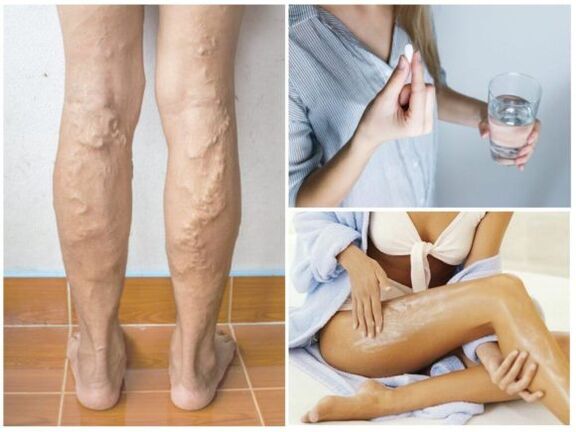
Are complications possible after surgery?
The technique of operations, refined to perfection for decades, allows you to minimize the risk of postoperative complications.However, in extremely rare cases (less than 1%), the development of negative consequences such as:
- Postoperative hematomas on the skin - resolved for a couple of months,
- Even the postoperative seals under the skin along the bed of a remote vein disappear a month or two after surgery,
- The mechanical damage to the lymphatic vessels that leads to lymphostasis (lymph stagnation) is treated conservatively, but after a few months the lymphone begins to circulate according to anastomosis and lymphotte from the limb is performed correctly.
- Damage to subcutaneous nerves, manifested by transient skin sensitivity disorders, leveled independently for several months.
Complications and consequences of surgical treatment
It doesn't matter how talented a surgeon can be, the varicose veins after surgery is sometimes felt in the shape of complications.Nobody can assume how this or that organism will behave.After surgery on the removal of varicose veins 2 and 3, there may be consequences that do not require treatment: bruises and hematomas, this is a normal reaction of the body to the tissue damage.If the patient follows the recommendations, everything will pass very quickly.Among other consequences, it can be seen:
- abundant bleeding;
- a decrease in the sensitivity of the limb (manifests itself with damage to subcutaneous nerves);
- Suppuration when entering the infection;
- numbness, etc.
As for pain, they can only be observed with Flebectomy, the other two treatment methods are almost painless.If then there are unpleasant sensations, then they easily stop analgesics.
The consequences can be serious;Among the most dangerous, thromboembolia stands out.This is an acute clogging of a blood vessel with a thrombus that detached itself from the place of its location and circulates together with the bloodstream.If the patient is witnessed in a timely way, then he can become a disabled person and even die.
Forecast and lifestyle after surgery
After the operation, for several days, aching pains are possible in the operated limb and insignificant edema.To stop unpleasant symptoms, non -pounding drugs are prescribed - Ketorol, Nise, etc.Immediately after the operation, the patient should begin to wear compression underwear and perform physiotherapy exercises prescribed by the doctor.
The second day after the operation, the patient can walk a little.After a week or two, the slow walk should be guaranteed for a couple of hours a day.
Provisions such as ::
- Refusal of bad habits,
- Correct nutrition except fat and harmful products,
- Compliance with the working and rest regime,
- The exclusion during the hours of work only of a sedentary or permanent position - a variation of the position of the limbs in the process is required.
In conclusion, I would like to note that, judging by the reviews, the operations to remove the veins are sufficiently favorable and practically no serious complications arise.In addition, the risk of threatening complications of varicose veins (thromboembolia, for example) decreases clearly after the removal of an extensive vein.Currently, an amputation of the limb due to serious inflammation and even gangrene due to thrombophlebitis (in particular against the background of diabetes) is not rare, so it is better to contact the surgeon in an initial phase and not refuse to remove the veins if necessary.Therefore, you will keep you not only the healthy limbs, but also the health of the whole body as a whole.
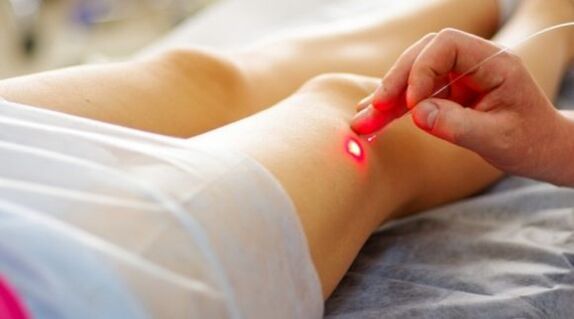
Preventive measures
With adverse heredity, when relatives have diagnosed varicose veins or a person is at risk for other reasons, it is important to take prevention measures:
Varicosa injection
- regularly take vitamin C, which strengthens the walls of the blood vessels and improves the characteristics of the blood composition;
- Use medicines, their hiring must be agreed with a doctor;
- use compression linen;
- Physical education is important, swimming, walking on foot, cycling, riding the bloodstream well.
Prevention also implies a transition to a healthy lifestyle: it is necessary to review the diet and abandon bad habits.



















